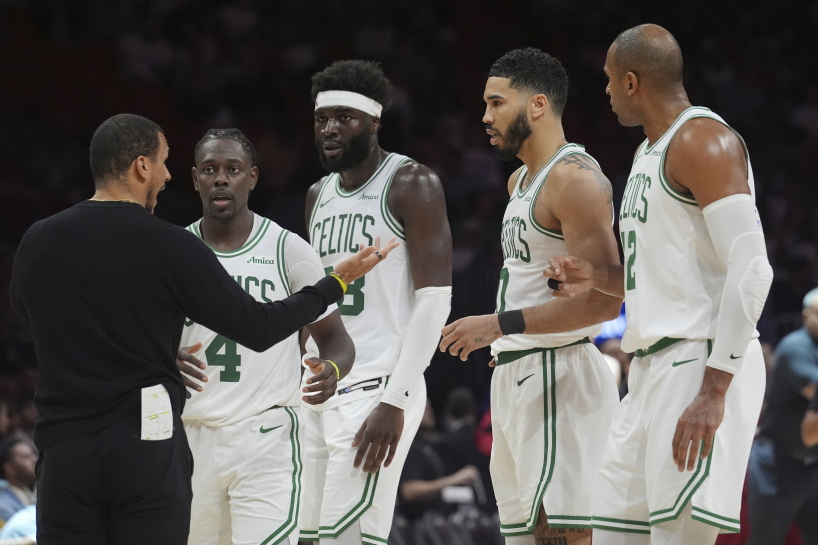
Celtics Feeling the Heat as New CBA Rules Freeze First-Round Pick
Boston’s Luxury Tax Woes and the Frozen 2032 First-Rounder Explained
After tasting championship glory in 2024, the Boston Celtics were hoping to cement their legacy with another deep postseason run. Instead, they found themselves bounced in the second round this year, and now face an offseason full of tough questions—many of them financial. The Celtics are now at the sharp end of the NBA’s revamped Collective Bargaining Agreement (CBA), and one particular wrinkle has already come back to bite: their 2032 first-round pick is frozen.
Yes, frozen. Not lost, not voided—just locked away for at least the next three years. Why? Because Boston finished this season above the second apron, the new luxury tax tier designed to penalize high-spending teams.
What Does “Frozen” Really Mean?
Under the updated CBA, teams that consistently exceed the second apron—set roughly $17.5 million above the luxury tax threshold—start losing key roster-building tools. And in Boston’s case, it means they can’t trade their 2032 first-round pick. That selection is now off-limits in trade discussions until at least 2028, unless they manage to get under the second apron in three of the next four years.
MassLive’s Brian Robb broke it down clearly: “This is where the second-apron penalties start to show up. Since Boston finished the 2024-25 season above the second apron, its first-round draft pick seven years away (2032) is ‘frozen’, i.e., can’t be traded for at least the next three years.”
He added: “If Boston stays under the second apron in at least three of the next four seasons, it becomes ‘unfrozen’ and tradable again at the start of the 2028-29 league year.”
This isn’t a trivial detail either. That pick, seemingly distant in the future, might’ve been one of Boston’s most attractive trade chips this summer. And now? It’s on ice.
A $500 Million Problem

Celtics Can’t Outrun Harsh Reality of CBA Penalties
Let’s not sugarcoat this: the Celtics are facing a financial mountain. According to ESPN’s Bobby Marks, their projected payroll and tax bill combined for the 2025-26 season could approach a jaw-dropping $500 million. That’s with 11 players already under contract, making it difficult to add depth or flexibility.
This is the cost of trying to win now—and win big. Boston loaded up in recent years with high-priced veterans and re-signed its stars to huge deals, including the richest contract in NBA history for Jaylen Brown. But with the second apron breathing down their necks, their options are now seriously limited.
Core in Question: Who Stays and Who Goes?
The Celtics aren’t just a team staring at a balance sheet; they’re also facing decisions that could break up the core that made them contenders. Reports suggest that just about everyone not named Jayson Tatum is on the table.
Jrue Holiday, Derrick White, and Kristaps Porzingis—three crucial contributors to last year’s title—have all been mentioned in trade talks. Even Jaylen Brown, a cornerstone of the franchise and Finals MVP just a year ago, has reportedly been floated in early discussions.
The reality is this: the front office may have to move a big name to escape the tax trap and regain some roster-building flexibility.
No Room for Mistakes Under the New CBA
The new rules don’t just hit your checkbook—they restrict movement. Teams above the second apron lose access to the midlevel exception, can’t aggregate salaries in trades, can’t sign buyout players, and—perhaps most frustratingly—can’t trade their own draft picks seven years out.
Boston’s front office knew these changes were coming. But with a championship window wide open last season, they pushed all their chips in. That decision delivered a title but now comes at a cost.
Without tradable picks, maneuvering becomes even harder. Boston might have to package players they’d rather keep to stay competitive while also ducking under the apron. That could mean moving on from solid role players—or even gambling with their top-end talent.
What’s the Path Forward?
For now, Celtics president of basketball operations Brad Stevens faces a high-wire act. Boston wants to contend. They need to maintain a core strong enough to keep Tatum happy and competing at the top of the East. But they also need to avoid locking themselves into second-apron hell for the next several seasons.
It’s likely we’ll see some major moves this summer. Trading a big contract like Porzingis or Holiday’s could lighten the tax load and give Boston more breathing room. But such trades could weaken the team’s title hopes in the short term. That’s the tightrope Stevens and the Celtics are now walking.
There’s also the challenge of convincing other teams to do business with them. Without that 2032 pick on the table—and with few other assets available—Boston’s trade packages might not be as enticing as they once were.
A New Era of Team Building
If this situation highlights anything, it’s that the NBA’s new CBA has completely changed how contenders are built—and how long they can stay at the top. Superteams, once the rage of the 2010s, are becoming increasingly difficult to sustain. And Boston is among the first elite teams to truly feel the crunch.
Gone are the days when deep-pocketed owners could endlessly outspend the competition. Now, if you live above the second apron, you’re penalized not just in cash, but in flexibility and control. Picks freeze. Trades become harder. And the clock starts ticking faster on your championship window.
Final Thoughts: The Cost of Chasing Banners
There’s no denying the Celtics made the right call in going all-in to win the 2024 title. Banners hang forever. But in the harsh light of the new CBA, the price of that glory is becoming more obvious with each passing day.
Frozen draft picks, massive tax bills, and tough roster decisions are now the new reality for Boston. And with the 2032 first-rounder locked away, the pressure is on to stay competitive while navigating this financial minefield.
One thing’s for sure: this offseason in Boston won’t be quiet. The frozen pick might be symbolic, but the message is loud and clear—the Celtics’ margin for error just got a whole lot smaller.












































There are no comments yet. Be the first to comment!